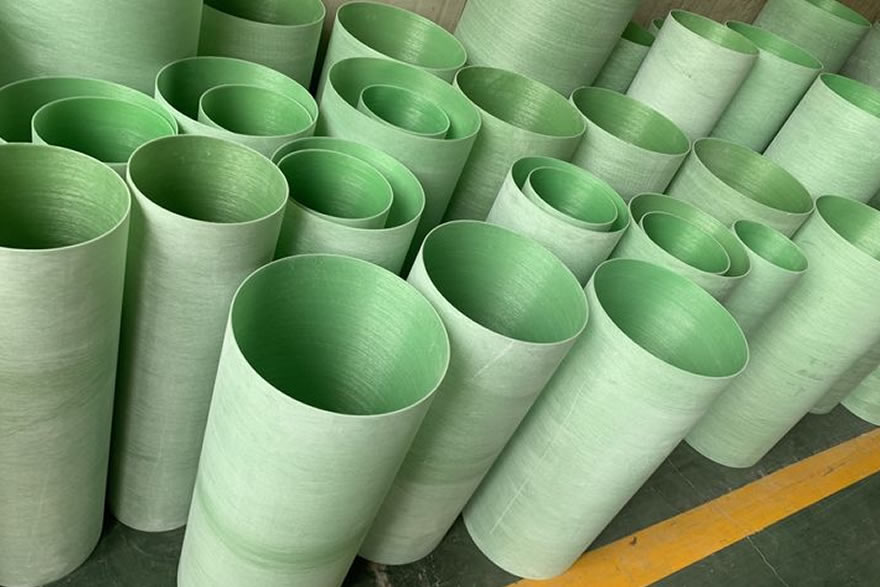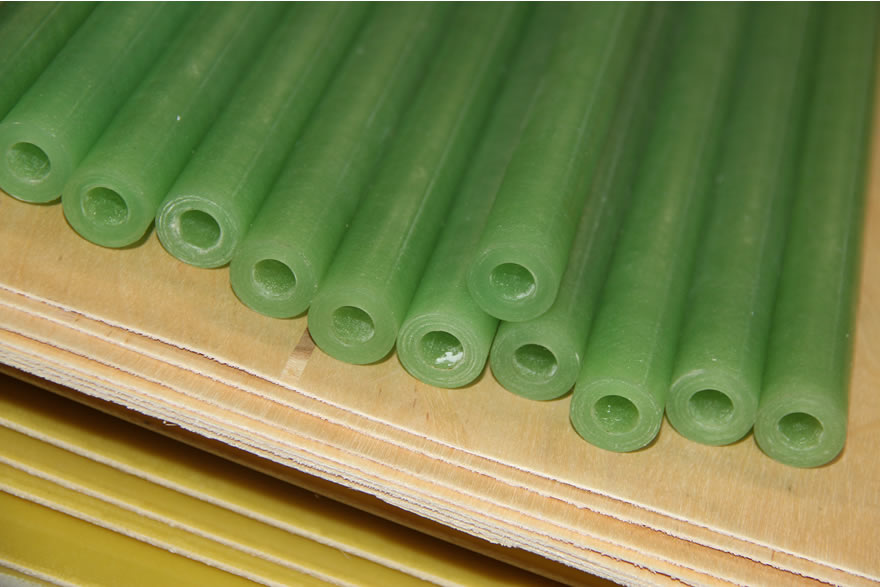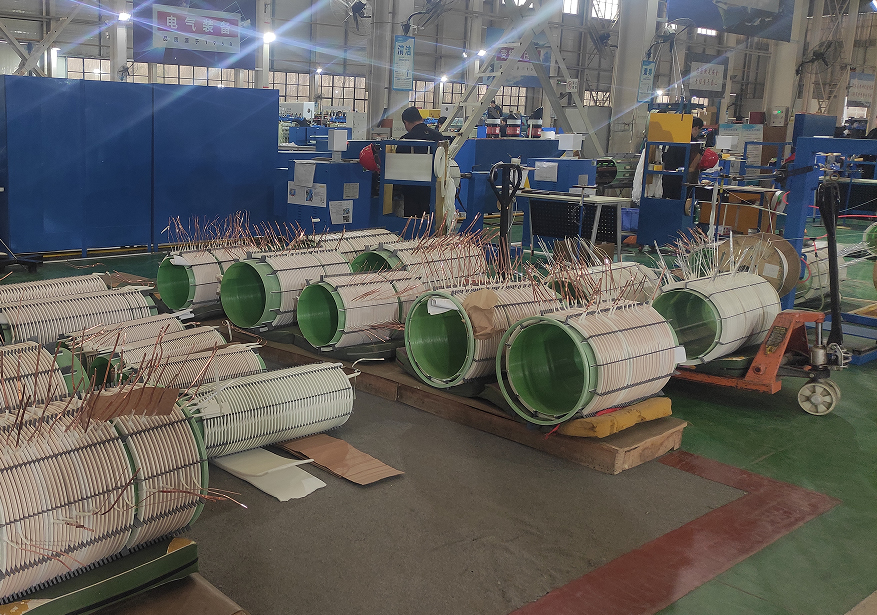Introduction to Glass Fiber Filament Wound Tubes Glass fiber filament wound tubes are composite insulating materials...
Glass fiber filament wound tubes are composite insulating materials made from alkali-free glass fiber yarns impregnated with thermosetting resins such as epoxy or phenolic resin. They are manufactured by filament winding on a mold, followed by high-temperature curing.

The fibers are arranged in both circumferential and axial directions, forming a dense and uniform structure. This gives the tubes excellent mechanical strength, electrical insulation, heat resistance, and chemical resistance.

| Equipment Category | Application Positions | Main Functions |
|---|---|---|
| Transformer | Insulating support tubes, lead sleeves, tie rods, press plates | Provide insulation and support, withstand electromagnetic and mechanical stress |
| Reactor / Current Transformer | Coil skeletons, insulating sleeves, support components | Ensure inter-turn and ground insulation, enhance structural stability |
| Switchgear / Circuit Breaker | Busbar support tubes, insulating spacers, operating rods | High insulation strength, arc resistance, improve operating safety |
| Power Capacitor | Internal supports, insulating fixing parts | Dimensional stability, reliable insulation, lightweight and strong |
| Power Generation Equipment | Stator coil skeletons, insulating tubes, structural supports | Withstand high temperatures, ensure long-term reliable insulation |
| New Energy Equipment | Photovoltaic inverters, energy storage systems, traction motors | Provide insulation and support, impact resistance, moisture and corrosion resistance |

Dielectric Strength: ≥10–20 kV/mm, sufficient for rated voltage class.
Volume Resistivity: ≥10^12 Ω·cm, ensuring long-term insulation.
Arc and Tracking Resistance: Suitable for high-voltage switchgear and circuit breakers.
Flexural Strength: ≥300 MPa, to withstand electromagnetic and mechanical stress.
Compressive Strength: ≥250 MPa, for support and fixing components.
Low Density: Lightweight, ideal for replacing metal parts.
Class F (155℃): Commonly used in transformers and switchgear.
Class H (180℃): For generators, traction motors, and high-temperature conditions.
Above 200℃: Custom options available for special applications.
Moisture Resistance: Suitable for outdoor and humid environments.
Chemical Resistance: Applicable in energy storage and photovoltaic equipment.
Aging and Fatigue Resistance: Ensure long service life.
Diameter Range: Commonly φ10 mm – φ600 mm, larger sizes customizable.
Wall Thickness: 2 mm – 20 mm (depending on load and insulation requirements).
Machining Options: Turning, grinding, drilling, tapping for precise assembly.
| Application Scenario | Recommended Thermal Class | Suggested Properties |
|---|---|---|
| Transformer Lead Sleeve | Class F 155℃ | Dielectric strength ≥15 kV/mm; compressive strength ≥250 MPa |
| Reactor Coil Skeleton | Class F/H | High insulation, moisture resistance, dimensional stability |
| Switchgear Busbar Support | Class H 180℃ | Arc resistance; flexural strength ≥300 MPa |
| Power Capacitor Fixing Part | Class F 155℃ | Lightweight, strong, high dimensional accuracy |
| Generator Stator Skeleton | Class H 180℃ | High temperature resistance, reliable insulation, fatigue resistance |
| PV / Energy Storage Inverter | Class H or above | Environmental resistance; insulation ≥10^12 Ω·cm |
In power equipment, glass fiber filament wound tubes serve mainly as insulation, support, fixation, and load-bearing components.
Selection should comprehensively consider electrical properties (voltage class), mechanical strength (load requirements), environmental adaptability (heat, moisture, corrosion resistance), and dimensional accuracy, to ensure long-term safe and stable operation.
If you are interested in our products,, please send us a message and we will contact you as soon as we receive it. Email: info@ztaero.com whatsApp: +8616650273778